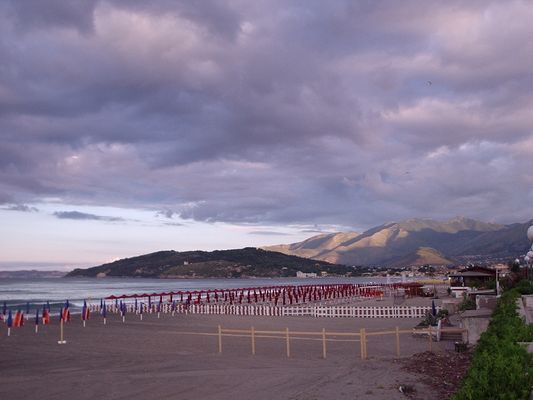This coastal town in central Italy dates back to Roman times, with thermal baths, archaeological ruins, and beaches along the Tyrrhenian Sea, 50 km from Rome.
Formia sits on Italy's western coast between Rome and Naples. You can walk past the massive Tomb of Cicero rising 24 meters into the sky, explore a 1,200-square-meter Roman water cistern beneath the streets, or watch fishing boats return with their catch at the small port. The town extends along the Mediterranean shore, where beaches lead to the clear waters of the Tyrrhenian Sea, and ferries depart regularly for the Pontine Islands.
Beaches and Water Activities
At Vindicio Beach, you can swim in clear Mediterranean waters or take windsurfing lessons from June through September. The coastline continues with smaller beaches toward Gaeta, including Gianola beach, which backs onto pine woods in the regional park. Local rental shops provide beach chairs, umbrellas, and water sports equipment.
Transportation and Island Connections
Trains run every hour from Formia-Gaeta station to Rome (1-hour journey) and Naples (45-minute journey). The port has daily ferry connections to Ponza and Ventotene islands. Local buses run every 30 minutes to Gaeta, Minturno, and Spigno, making these towns easy to visit.
Markets and Local Dishes
Visit the morning fish market near the port from 6 AM to sell out, usually around 10 AM. Local restaurants serve spaghetti alla formiana, made with small plum tomatoes and wild herbs from the surrounding hills. The regional specialty tiella di Gaeta combines seafood, vegetables, and two layers of thin crust. Local olive groves and vineyards continue a tradition of oil and wine production dating to Roman times.
The Ancient Roman Cistern and Tomb
The Cisternone Romano lies beneath the modern town center. This 1st-century BC water reservoir spans 1,200 square meters, with 24 pillars supporting its vaulted ceiling. Along the old Appian Way stands the 24-meter-high Tomb of Cicero within an 83-by-68-meter enclosure, marking where the famous orator met his end in 43 BC.
Life in Mola and Castellone Districts
In Mola quarter, follow narrow streets up to a medieval watchtower, then down to the small fishing port. Castellone's streets wind between stone buildings from the 1300s, with residents going about their day among centuries-old courtyards.
Museums and Religious Architecture
The Museo Archeologico Nazionale displays Roman artifacts found in local excavations, including sculptures, coins, and household items. The Church of San Giovanni Battista e Lorenzo, dating from 841, contains a 15th-century panel painting by Antoniazzo Romano. Below San Luca Church, you'll find medieval frescos showing scenes from the New Testament in the underground crypt.




















